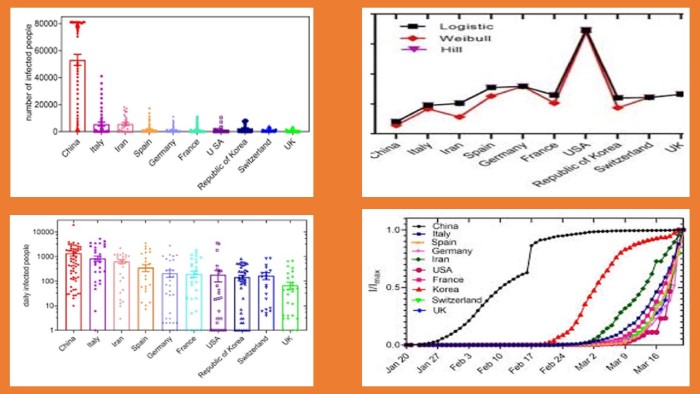[1] C. Huang, Y. Wang, X. Li, L. Ren, J. Zhao, Y. Hu, L. Zhang, G. Fan, J. Xu, X. Gu, Z. Cheng,
Lancet.,
2020,
395, 497–506.
[crossref], [Google Scholar], [Publisher]
[2] N. Chen, M. Zhou, X. Dong, J. Qu, F. Gong, Y. Han, Y. Qiu, J. Wang, Y. Liu, Y. Wei, T. Yu,
Lancet.,
2020,
395, 507–513.
[crossref], [Google Scholar], [Publisher]
[3] D. Wang, B. Hu, C. Hu, F. Zhu, X. Liu, J. Zhang, B. Wang, H. Xiang, Z. Cheng, Y. Xiong, Y. Zhao,
JAMA,
2020.
[crossref], [Google Scholar], [Publisher]
[5] M. Wang, R. Cao, L. Zhang, X. Yang, J. Liu, M. Xu, Z. Shi, Z. Hu, W. Zhong, G. Xiao,
Cell Res., 2020 Feb 4.
[crossref], [Google Scholar], [Publisher]
[6] M. Mokhtare, R. Alimoradzadeh, S. Agah, H. Mirmiranpour, N. Khodabandehloo,
, Middle East journal of digestive diseases,
2017,
9, 228.
[crossref], [Google Scholar], [Publisher]
[7] R. Alimoradzadeh, H. Mirmiranpour, P. Hashemi, S. Pezeshki, S.S. Salehi,
Journal of Neurology & Neurophysiology,
2019,
10, 1-5.
[crossref], [Google Scholar], [Publisher]
[10] S. Su, G. Wong, W. Shi, J. Liu, A.C.K. Lai, J. Zhou, W. Liu, Y. Bi, G.F. Gao,
Trends Microbiol.,
2016,
24, 490-502.
[crossref], [Google Scholar], [Publisher]
[14] Z.A. Memish, J.A. Al-Tawfiq, A. Assiri, F.A. AlRabiah, S. Al Hajjar, A. Albarrak, H. Flemban, R.F. Alhakeem, H.Q. Makhdoom, S. Alsubaie, A.A. Al-Rabeeah,
The Pediatric infectious disease journal,
2014,
33, 904-6.
[crossref], [Google Scholar], [Publisher]
[18] M.L. Holshue, C. DeBolt, S. Lindquist, K.H. Lofy, J. Wiesman, H. Bruce, C. Spitters, K. Ericson, S. Wilkerson, A. Tural, G. Diaz,
N. Engl. J. Med.,
2020,
382, 929-936.
[crossref], [Google Scholar], [Publisher]
[20] K. Bajema, A.M. Oster, O.L. McGovern, S. Lindstrom, M.R. Stenger, T.C. Anderson, Isenhour C, K.R. Clarke, M.E. Evans, V.T. Chu, HM. Biggs,
MMWR Morb. Mortal. Wkly. Rep.,
2020,
69, 166-170.
[crossref], [Google Scholar], [Publisher]
[21] Y.C. Liu, C.H. Lio, C.F. Chang, C.C. Chou, Y.R. Lin,
N. Engl. J. Med.,
2020,
382, 1070-1072.
[crossref], [Google Scholar], [Publisher]
[22] S.A. Lauer, K.H. Grantz, Q. Bi, F.K. Jones, Q. Zheng, H.R. Meredith, A.S. Azman, N.G. Reich, J. Lessler,
Ann. Intern. Med., 2020.
[crossref], [Google Scholar], [Publisher]
[24] S. Kunling, Y. Yonghong, W. Tianyou, Z. Dongchi, J. Yi, J. Runming, Z. Yuejie, X. Baoping, X. Zhengde, L. Likai, S. Yunxiao,
World J. Pediatr.,
2020,
16, 223-231.
[crossref], [Google Scholar], [Publisher]
[25] L.J. Stockman, M.S. Massoudi, R. Helfand, D. Erdman, A.M. Siwek, L.J. Anderson, U.D. Parashar,
Pediatr. Infect. Dis. J.,
2007,
26, 68-74.
[crossref], [Google Scholar], [Publisher]
[26] W. Xia, J. Shao, Y. Guo, X. Peng, Z. Li, D. Hu,
Pediatric pulmonology,
2020,
55, 1169-1174.
[crossref], [Google Scholar], [Publisher]
[28] S. Zhang, M.Y. Diao, W. Yu, L. Pei, Z. Lin, D. Chen,
Int. J. Infect. Dis.,
2020,
93, 201-204.
[crossref], [Google Scholar], [Publisher]
[30] X.W. Xu, X.X. Wu, X.G. Jiang, K.J. Xu, L.J. Ying, C.L. Ma, S.B. Li, H.Y. Wang, S. Zhang, H.N. Gao, J.F. Sheng,
BMJ,
2020,
368.
[crossref], [Google Scholar], [Publisher]
[31] R. Lu, X. Zhao, J. Li, P. Niu, B. Yang, H. Wu, W. Wang, H. Song, B. Huang, N. Zhu, Y. Bi,
Lancet.,
2020,
395, 565-574.
[crossref], [Google Scholar], [Publisher]
[32] P. Wu, X. Hao, E.H. Lau, J.Y. Wong, K.S. Leung, J.T. Wu, B.J. Cowling, G.M. Leung,
Eurosurveillance,
2020,
25, 2000044.
[crossref], [Google Scholar], [Publisher]
[33] F.X. Lescure, L. Bouadma, D. Nguyen, M. Parisey, P.H. Wickey, S. Behillil, A. Gaymard, M. Bouscambert-Duchamp, F. Donati, Q. Le Hingrat, V. Enouf,
Lancet.,
2020,
20, 697-706.
[crossref], [Google Scholar], [Publisher]
[37] K. Shen, Y. Yang, T. Wang, D. Zhao, Y. Jiang, R. Jin, Y. Zheng, B. Xu, Z. Xie, L. Lin, Y. Shang,
World J. Pediatrician,
2020,
16, 223-231.
[crossref], [Google Scholar], [Publisher]
[40] A. Samimi,
International Science and Investigation journal,
2014,
3, 57-64.
[crossref], [Google Scholar], [Publisher]
[42] A. Susanabadi, M.S. Sadri, H. Taleby, S. Etemadi, B. Mahmoodiyeh, M.M. Fard,
Annals of the Roma-nian Society for Cell Biology,
2021,
25, 2703-2716.
[Google Scholar], [Publisher]
[43] A. Susanabadi, S. Etemadi, M.S. Sadri, B. Mahmoodiyeh, H. Taleby, M.M. Fard,
Annals of the Romanian Society for Cell Biology,
2021,
25, 2875–2887.
[Google Scholar], [Publisher]
[44] A. Yarahmadi, K. Kamrava, A. Shafee, M.M. Fard, M. Aghajanpour, A. Mohebbi,
Journal of Pharmaceutical Research International,
2020,
31, 1-6.
[crossref], [Google Scholar], [Publisher]
[49] A.O. Shirazi, H. Jahandideh, A. Yarahmadi, M.M. Fard, M.M. Delarestaghi,
Medical Science,
2020,
24, 2467-2474
[crossref], [Google Scholar], [Publisher]
[50] B. Mahmoodiyeh, S. Etemadi, A. Kamali, S. Rajabi, M.M. Fard,
Annals of the Romanian Society for Cell Biology,
2021,
25, 2559–2572.
[Google Scholar], [Publisher]
[53] E.S. Motaharian, B. Mahmoodiyeh, S. Lorestani, M.S. Sadri, M.M. Fard, A.M.M. Fard, A. Amini,
Journal of Chemical Reviews,
2021,
3, 171-180.
[crossref], [Google Scholar], [Publisher]
[56] F. Zabihi, M.A. Abbasi, R. Alimoradzadeh,
Annals of the Romanian Society for Cell Biology,
2021,
25, 2573–2579.
[Google Scholar], [Publisher]
[59] F. Zare Kazemabadi, A. Heydarinasab, A. Akbarzadeh, M. Ardjmand,
Artificial cells, nanomedicine, and biotechnology,
2019,
47, 3222-3230.
[crossref], [Google Scholar], [Publisher]
[60] S.V. Mousavi, A. Bozorgian, N. Mokhtari, M.A. Gabris, H.R. Nodeh,
Microchemical Journal,
2019,
145, 914-920.
[crossref], [Google Scholar], [Publisher]
[61] A. Bozorgian,
Advanced Journal of Chemistry, Section B: Natural Products and Medical Chemistry,
2021,
3, 54-61.
[crossref], [Google Scholar], [Publisher]
[62] S.M.S. Mirnezami, F. Zare Kazemabadi, A. Heydarinasab,
Progress in Chemical and Biochemical Research,
2021,
4, 191-206.
[crossref], [Google Scholar], [Publisher]
[68] S Etemadi, B Mahmoodiyeh, S Rajabi, A Kamali, M Milanifard,
Annals of the Romanian Society for Cell Biology, 2021,
25,
2417-2426.
[crossref], [Google Scholar], [Publisher]
[69] S. Zarinabadi, A. Esfandiyari, S.A. Khoddami, A. Samimi,
Journal of Fundamental and Applied Sciences,
2016,
8, 1133-1149.
[crossref], [Google Scholar], [Publisher]


